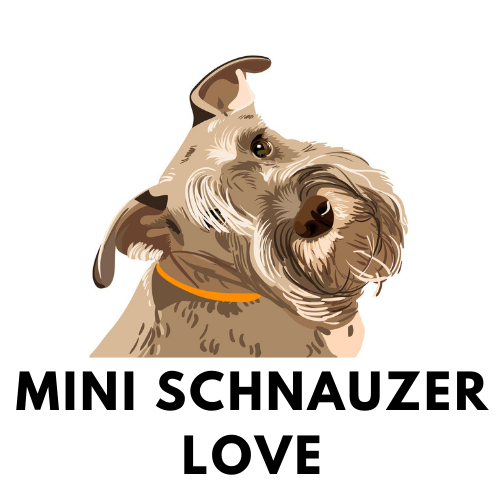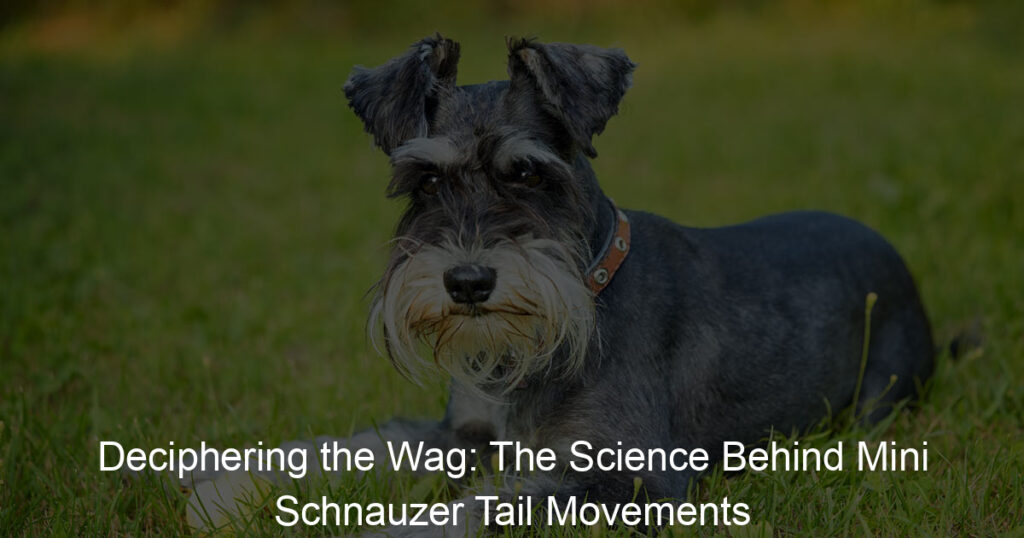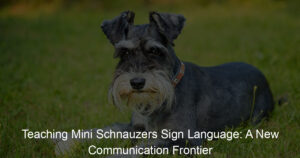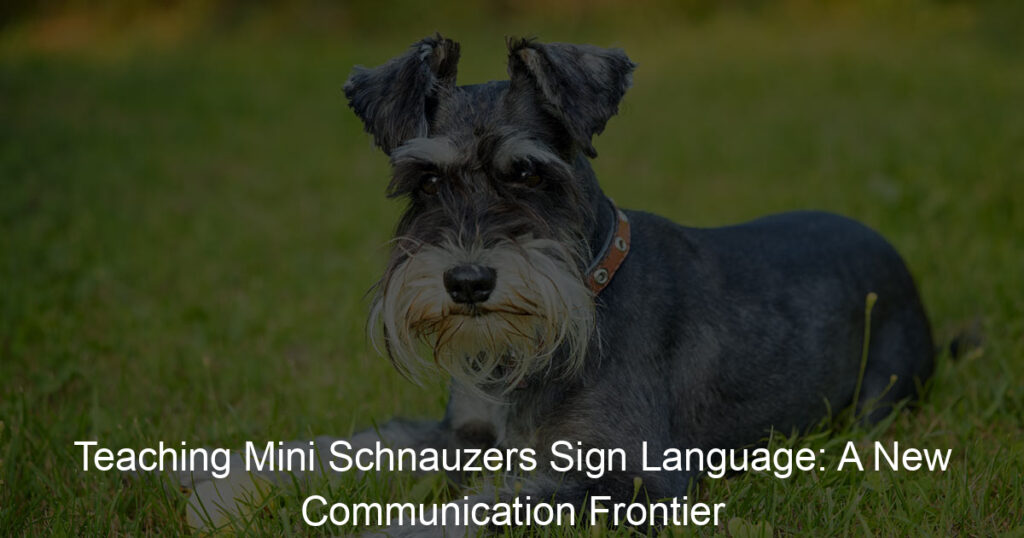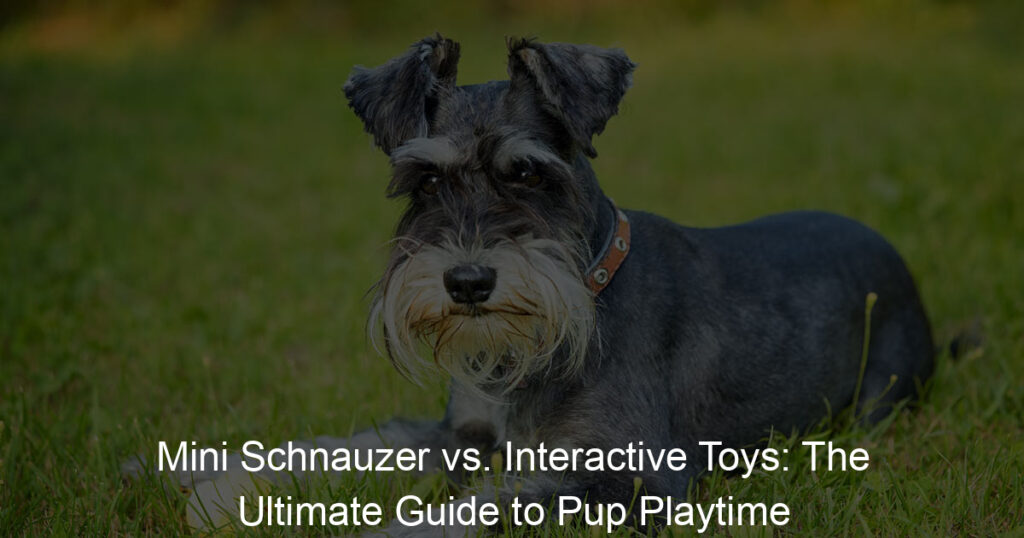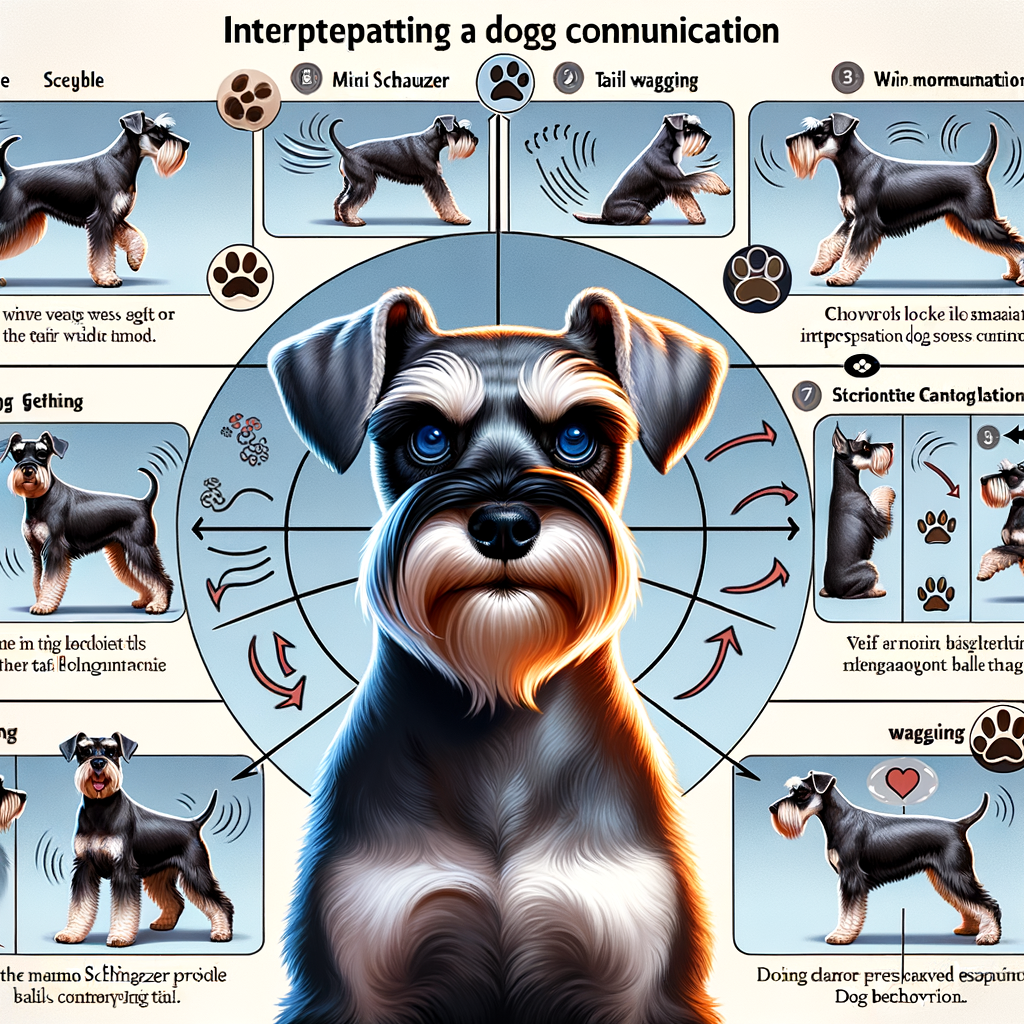
Introduction to Mini Schnauzer Behavior
Welcome to our comprehensive guide on understanding the behavior of Mini Schnauzers. These small, energetic dogs have unique personality traits that set them apart from other breeds. In this section, we will delve into what makes Mini Schnauzers special and how their behavior differs from other dog breeds.
- Understanding the Mini Schnauzer’s Unique Personality Traits
Mini Schnauzers are known for their lively and spirited nature. They are intelligent dogs with a strong desire to please their owners. This makes them highly trainable and great companions. They are also known for their alertness and protective nature, making them excellent watchdogs.
Mini Schnauzers are also very expressive. They have a wide range of vocalizations and body language that they use to communicate their feelings. This includes barking, whining, growling, and even howling. They are also known for their “Schnauzer talk”, a series of grunts, groans, and other noises that they use to express themselves.
| Personality Trait | Description |
|---|---|
| Intelligence | Mini Schnauzers are quick learners and enjoy mental stimulation. |
| Alertness | They are always aware of their surroundings and quick to alert their owners of anything unusual. |
| Expressiveness | They use a wide range of vocalizations and body language to communicate. |
- How Mini Schnauzer Behavior Differs from Other Breeds
While all dogs have their unique personalities, Mini Schnauzers stand out in several ways. One of the most notable differences is their high energy levels. Mini Schnauzers are known for their boundless energy and need for regular exercise. This sets them apart from more laid-back breeds.
Another key difference is their strong protective instinct. While many small dogs are friendly and sociable, Mini Schnauzers can be quite territorial. They are known to be wary of strangers and will bark to alert their owners of any perceived threats.
Finally, Mini Schnauzers are known for their “Schnauzer talk”. This unique form of communication is not seen in many other breeds and is one of the things that makes Mini Schnauzers so endearing to their owners.
Understanding your Mini Schnauzer’s behavior is the first step towards building a strong and loving relationship with your furry friend. Stay tuned for more insights in the following sections.
The Science of Dog Behavior
Understanding the behavior of our furry friends is a fascinating journey. This journey is made possible through the science of dog behavior, also known as canine behavior science. Let’s delve into this intriguing subject.
Canine Behavior Science: A Brief Overview
Canine behavior science is a specialized field of study that focuses on understanding the behavior of dogs. It involves the study of a dog’s instincts, social interactions, communication methods, and learning processes. This field of study is crucial in helping us understand our dogs better.
- Understanding the basics of canine behavior science
- How canine behavior science helps in decoding dog behavior
At the heart of canine behavior science is the understanding that dogs, like humans, have their own unique personalities and behaviors. They communicate through a variety of signals such as tail wagging, barking, and body language. They also learn through a process called conditioning, where their behavior is shaped by the consequences of their actions.
Canine behavior science plays a crucial role in decoding dog behavior. By studying their instincts, social interactions, and learning processes, we can better understand why dogs behave the way they do. For instance, a dog wagging its tail doesn’t always mean it’s happy. It could also be a sign of fear or anxiety. Understanding these nuances can help us respond appropriately to our dogs’ needs and behaviors.
In conclusion, canine behavior science is a fascinating field that helps us understand our dogs better. By understanding the basics of this science and how it helps in decoding dog behavior, we can build stronger, more meaningful relationships with our furry friends.
Applying Canine Behavior Science to Mini Schnauzers
Let’s delve deeper into the application of canine behavior science specifically to Mini Schnauzers. We’ll explore a case study and highlight the key takeaways.
-
Case study: Applying behavior science to understand Mini Schnauzer behavior
In a recent study, behavior scientists observed a group of Mini Schnauzers in various environments. They noted their reactions to different stimuli, such as food, toys, and other dogs. The findings were fascinating.
For instance, Mini Schnauzers displayed a unique tail wagging pattern when presented with their favorite toy. This pattern was different from the one they showed when they saw a familiar human or another dog. This suggests that Mini Schnauzers may have a specific way of expressing joy or excitement.
Furthermore, the study found that Mini Schnauzers are more likely to display submissive behavior when interacting with larger dogs. This behavior included lowering their body, avoiding direct eye contact, and tucking their tail between their legs.
These findings provide valuable insights into the behavior of Mini Schnauzers and can help owners better understand and communicate with their pets.
-
Key takeaways from the case study
From this case study, we can draw several important conclusions about Mini Schnauzer behavior:
Behavior Meaning Unique tail wagging pattern with favorite toy Expression of joy or excitement Submissive behavior with larger dogs Sign of respect or fear Understanding these behaviors can help Mini Schnauzer owners to better communicate with their dogs, leading to a happier and healthier relationship.
Applying canine behavior science to Mini Schnauzers allows us to decode their unique behaviors and understand what they are trying to communicate. This knowledge is invaluable for any Mini Schnauzer owner, as it can greatly improve the bond between them and their pet.
Decoding Schnauzer Tail Wagging
Understanding the tail wagging of your Mini Schnauzer can be a fascinating journey. It’s a unique form of communication that dogs use to express their emotions and intentions. Let’s delve into the world of dog tail movements and what they mean.
Understanding Dog Tail Movements
Before we dive into the specifics of Schnauzer tail wagging, it’s essential to grasp the general significance of tail movements in dog communication and the common meanings behind different tail wagging patterns.
- The Significance of Tail Movements in Dog Communication
- Common Meanings Behind Different Tail Wagging Patterns
Dog tail movements are a vital part of their body language. They can convey a wide range of emotions such as happiness, fear, aggression, and submission. For instance, a wagging tail often indicates a dog is happy and relaxed, but it can also signify the exact opposite. It’s all about the context and the specific movements.
There are several common tail wagging patterns that most dogs exhibit. Here are a few examples:
| Pattern | Meaning |
|---|---|
| Fast, wide swings | Excitement or happiness |
| Slow, narrow swings | Uncertainty or mild interest |
| Tail held high and stiff | Dominance or aggression |
| Tail tucked under the body | Fear or submission |
These are just general patterns. Each dog, including your Mini Schnauzer, may have unique tail wagging patterns that you’ll need to observe and understand.
Now that we’ve covered the basics of dog tail movements, we can move on to the specifics of Schnauzer tail wagging in the next section.
Schnauzer Tail Wagging: What Does It Mean?
Every dog owner knows that a wagging tail is not just a simple movement. It is a way for our furry friends to communicate their feelings. This is especially true for Schnauzers, whose expressive tails can tell us a lot about what they’re thinking and feeling.
- Decoding the meanings behind specific Schnauzer tail wagging patterns
- Examples of Schnauzer tail wagging and their interpretations
- Example 1: You come home from work and your Schnauzer’s tail starts wagging fast and furiously. This means they are excited and happy to see you.
- Example 2: You introduce your Schnauzer to a new dog and their tail is wagging slowly and low. This could mean they are feeling unsure or nervous about the new dog.
- Example 3: There’s a thunderstorm outside and your Schnauzer’s tail is stiff and not wagging. This could mean they are feeling scared or anxious about the storm.
When it comes to Schnauzers, their tail wagging can mean a variety of things. Here are some common patterns and their meanings:
| Wagging Pattern | Meaning |
|---|---|
| Fast and furious | This usually means your Schnauzer is excited or happy. It could be because they see you, their favorite toy, or a tasty treat. |
| Slow and low | If your Schnauzer’s tail is wagging slowly and it’s low, they might be feeling unsure or nervous. This could happen in a new environment or when meeting new people or dogs. |
| Stiff and still | A tail that’s stiff and not wagging could mean your Schnauzer is feeling tense, anxious, or scared. It’s important to pay attention to this signal and try to comfort your dog. |
Let’s look at some examples to better understand Schnauzer tail wagging:
Understanding your Schnauzer’s tail wagging can help you better communicate with them and meet their needs. Remember, every dog is unique, so these interpretations might not apply to all Schnauzers. Always pay attention to your dog’s overall body language and behavior to get a complete picture of what they’re trying to tell you.
Mini Schnauzer Body Language: Beyond Tail Wagging
While tail wagging is a common form of communication for dogs, Mini Schnauzers express themselves in many other ways. Understanding these signals can help you build a stronger bond with your pet.
Understanding Mini Schnauzer Body Language
Let’s delve into the fascinating world of Mini Schnauzer body language. We’ll explore how to read these signals and what they mean, enhancing your ability to communicate with your furry friend.
- How to read Mini Schnauzer body language
- Common Mini Schnauzer body language signals and their meanings
Reading a Mini Schnauzer’s body language involves observing their entire body. Pay attention to their ears, eyes, mouth, and posture. For instance, relaxed ears and a wagging tail usually indicate happiness, while a stiff body and bared teeth could mean your pet is feeling threatened.
| Signal | Meaning |
|---|---|
| Relaxed ears and wagging tail | Happiness or excitement |
| Stiff body and bared teeth | Feeling threatened or scared |
| Lowered body and tucked tail | Submission or fear |
| Jumping and barking | Playfulness or attention-seeking |
Remember, these are general guidelines. Each Mini Schnauzer has its unique personality and may express emotions differently. The key is to spend time with your pet and observe their behavior in different situations.
Understanding your Mini Schnauzer’s body language is a journey of discovery. It’s a wonderful way to deepen your bond and ensure your pet feels understood and cared for. So, keep observing, keep learning, and enjoy the rewarding relationship with your Mini Schnauzer.
Decoding Other Aspects of Mini Schnauzer Behavior
Mini Schnauzers are known for their expressive nature. They communicate with their owners not only through tail wagging and body language but also through facial expressions and vocalizations. Let’s delve deeper into these aspects to better understand our furry friends.
- Understanding Mini Schnauzer Facial Expressions
- Decoding Mini Schnauzer Vocalizations
Mini Schnauzers have a wide range of facial expressions that can tell you a lot about their mood and intentions. For instance, when a Mini Schnauzer’s eyes are wide and alert, it usually means they are interested or excited. On the other hand, narrowed eyes could indicate discomfort or suspicion.
A relaxed mouth, where the jaw is slightly open and the tongue may be lolling out, is a sign of contentment. However, a tightly closed mouth can be a sign of tension or stress. It’s important to observe these subtle changes to understand what your pet is trying to communicate.
Mini Schnauzers are quite vocal and use a variety of sounds to express themselves. A happy, excited Mini Schnauzer may bark in a high-pitched, rapid manner. A low growl, on the other hand, could be a warning sign of discomfort or fear.
Whining or whimpering is often a sign of distress or need. Your Mini Schnauzer might use these sounds to tell you they’re hungry, need to go outside, or want your attention. Remember, understanding these vocal cues can greatly enhance your bond with your pet.
In conclusion, understanding and decoding your Mini Schnauzer’s behavior goes beyond just tail wagging and body language. Paying attention to their facial expressions and vocalizations can provide a wealth of information about their emotional state and needs. This will not only help you take better care of them but also strengthen your bond with your furry friend.
Conclusion: Understanding Your Mini Schnauzer Better
As we wrap up our discussion on Mini Schnauzer behavior, it’s important to remember that understanding your furry friend’s actions can significantly improve your relationship with them. Let’s summarize what we’ve learned.
- How understanding tail wagging and body language can improve your relationship with your Mini Schnauzer
- Final thoughts on the science of dog behavior and its application to Mini Schnauzers
Recognizing the meaning behind your Mini Schnauzer’s tail wagging and body language is key to better communication. For instance, a relaxed tail often indicates contentment, while a stiff tail might signal alertness or anxiety. Similarly, if your Schnauzer’s body is relaxed and their ears are up, they’re likely feeling happy and secure. On the other hand, a hunched body and pinned back ears could mean they’re scared or uncomfortable.
By understanding these signals, you can respond appropriately to your pet’s needs, strengthening your bond and making your Mini Schnauzer feel loved and understood.
The science of dog behavior is a fascinating field that can help us understand our pets better. Studies show that dogs, including Mini Schnauzers, have a complex range of emotions and behaviors, much like humans. They use body language and vocalizations to communicate their feelings and intentions.
Applying this knowledge to your Mini Schnauzer can help you interpret their behavior accurately, leading to a more harmonious and fulfilling relationship. Remember, every dog is unique, so take the time to learn about your Mini Schnauzer’s individual personality and behavior patterns.
In conclusion, understanding your Mini Schnauzer’s behavior is a rewarding journey that can deepen your bond and make your shared experiences more enjoyable. So, keep observing, keep learning, and most importantly, keep loving your Mini Schnauzer!
